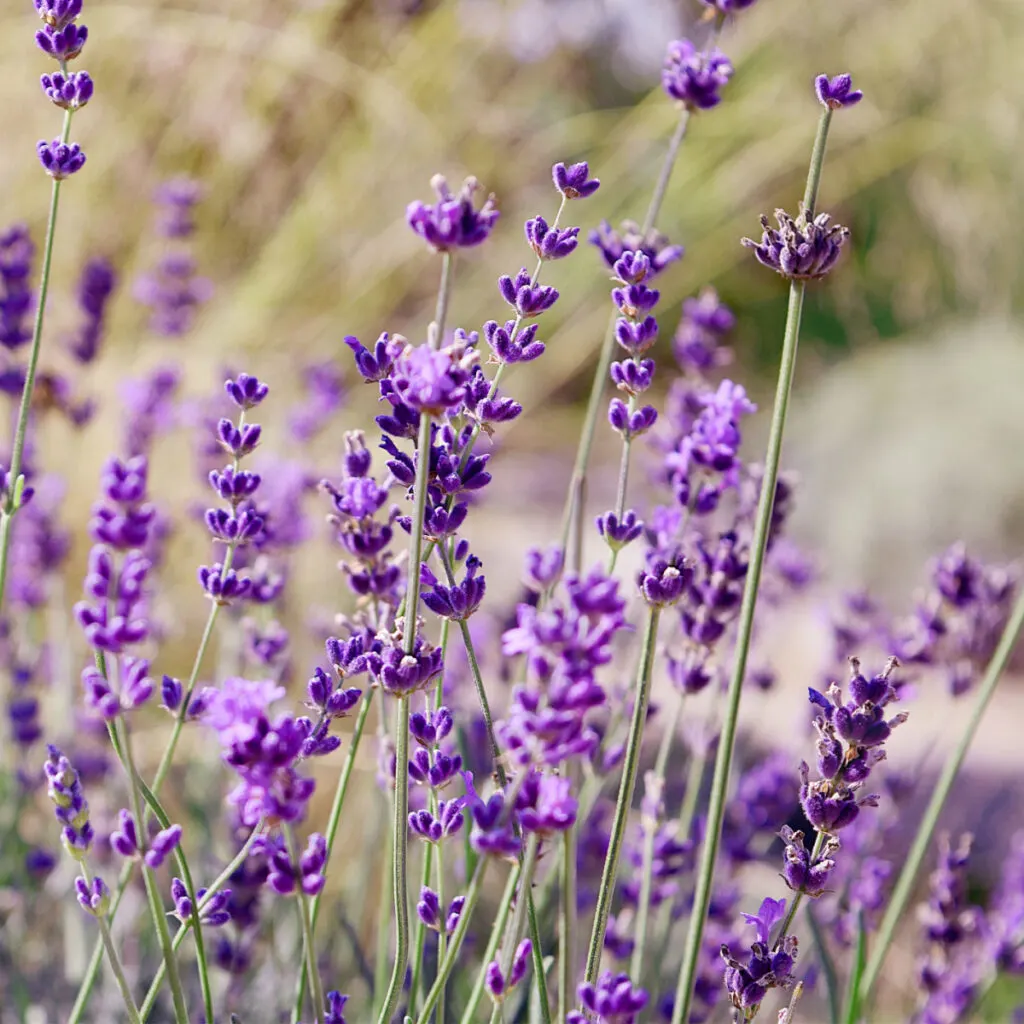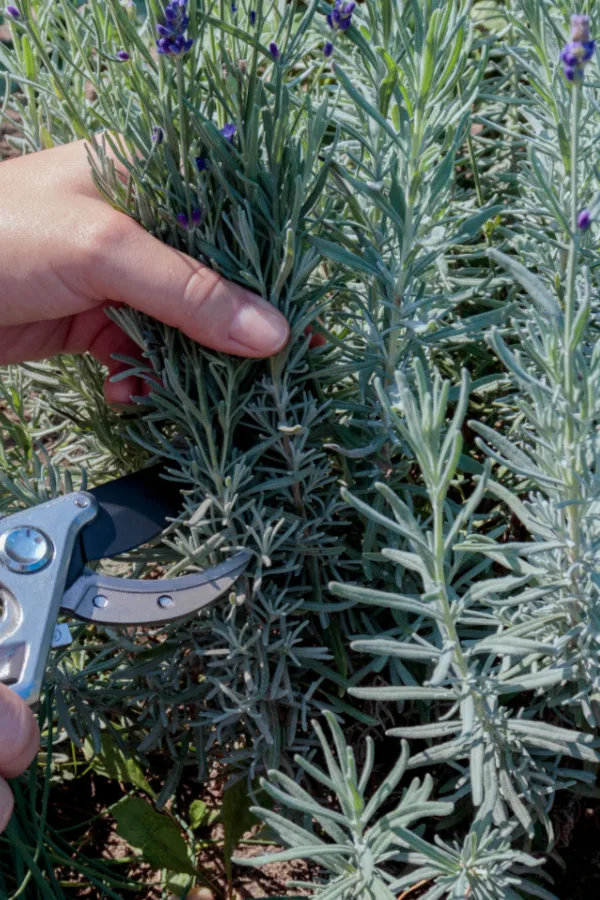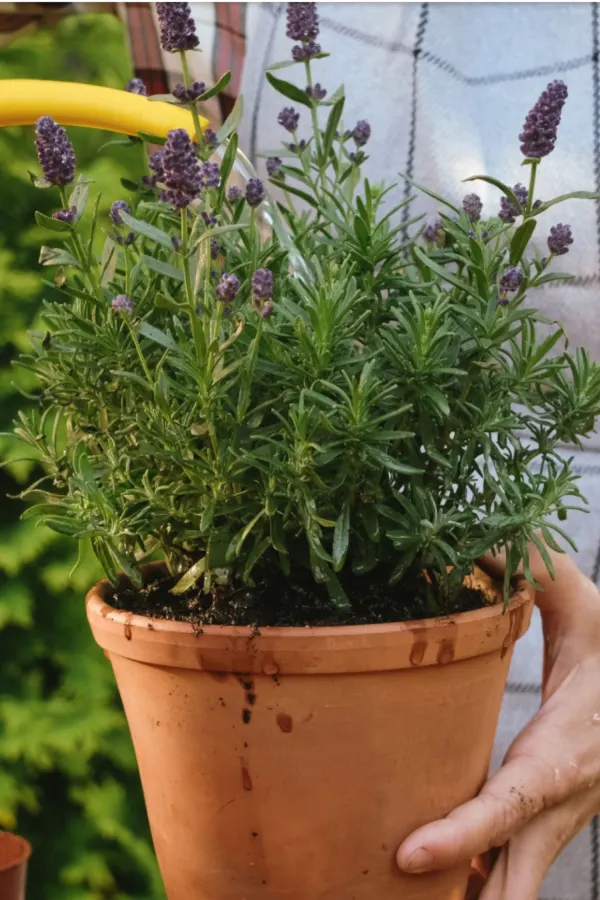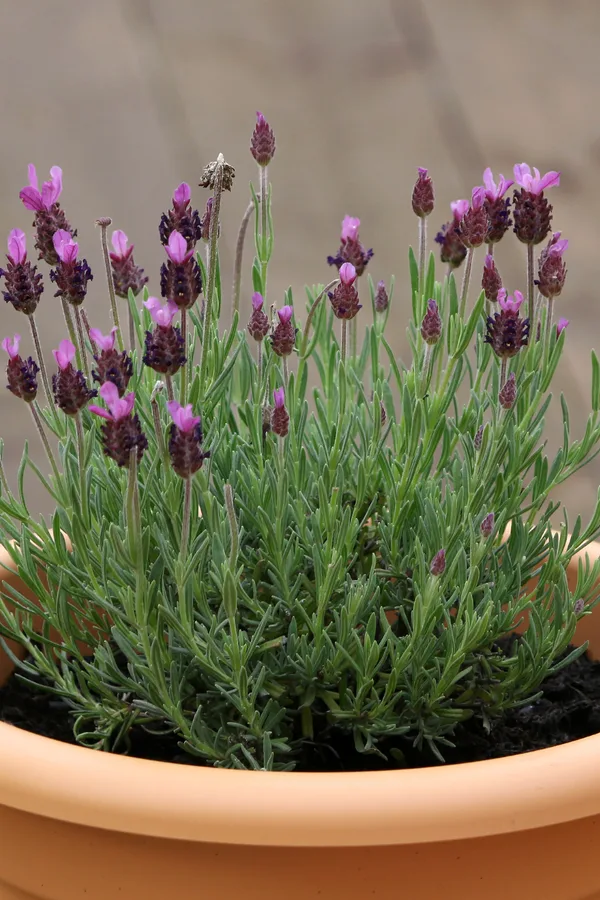Wondering what to do with your lavender plants this fall before winter arrives? Whether you grow lavender directly in flowerbeds or in pots and containers, how you care for them in the fall can play a big role in both how they survive the winter – and how they grow and bloom next year!
Lavender is one of the most prolific blooming perennials of all in the landscape. With proper care and timely deadheading of spent blooms throughout the spring and summer, many lavender plants can bloom two, three, or even four times in a single season.
But as the cool weather of autumn settles in, it’s important to give your lavender the proper care they need to get ready for the upcoming winter. Unfortunately, when it comes to this gorgeous flowering perennial, just what to do to these plants in the fall and when to do it can be a bit confusing.

Should you cut lavender back in the fall or wait until spring? Do you need to fertilize plants before winter? What about moving or dividing lavender plants that have grown too large? And how do you care for and protect the lavender that are growing in pots and containers?
The answers to all of the questions above are indeed important. Not only can giving your lavender the proper care before winter help keep them healthy and strong for next year – it can also mean the difference between life and death for surviving the harsh winter ahead. With that in mind, here is a look at how to properly care for your plants as autumn arrives!
What To Do With Lavender Plants Before Winter – Fall Lavender Care 101
Fall Pruning
When caring for lavender in the fall, in most cases, less is more. Or, more to the point, the less stress and disruption you cause for your plant, the better. That “less is more” philosophy is never more front and center than when talking about pruning lavender back in the fall.

Although many perennials can be cut back in late fall without worry, lavender is a bit different. Pruning heavily late in the year can actually leave the plant exposed to winter damage. This is especially true when it grows in Northern climates where winters can be far colder and more harsh.
When it comes to serious shaping and pruning, it’s best to always wait until early spring for lavender. Allowing the plant to have more mass helps protect it from the cold. Heavy pruning can also spur on tender growth which is extremely susceptible to winter damage.
Unfortunately, one thing you can’t do with a lavender plant is divide it. Not just in the fall, but anytime of the year. Because of its woody, shrub like base, the plant does not handle division well. Attempting to dig up and split a lavender plant will almost certainly lead to the entire plant dying off.
So what can you do for overly large plants? The best course of action is to wait until early spring and cut the plant back to within a few inches of the ground. Major pruning will often delay blooming for a year, but it can help you to have a smaller, more manageable plant.
Deadheading & Light Shaping – What To Do With Lavender Plants Before Winter
One thing you will want to do for your lavender plants in the fall is deadhead any spent blooms from the plant. This not only cleans up your beds for a tidier look, it also helps your lavender plants stay stronger. This isn’t major pruning, but simply cutting off the bloom stem right below the dying flower.
By removing the old blooms, you help the plant conserve precious energy. As long as old blooms remain, they continue to use nutrients from the plant. First they burn energy trying to heal their dying blooms. Then, they spend even more trying to form seeds.

Deadheading allows the plant to save energy instead for better root health. Healthy, strong roots are pivotal in both helping lavender to survive winter – and aiding in powering next year’s growth and blooms to be bigger and better. (For more on deadheading, see: How To Deadhead Annual & Perennial Flowers)
One final note on fall pruning of lavender – it’s more than okay to also lightly prune any wild branches or stems at this point – and without worry. A few snips here and there will not endanger the plant for winter. The real key to success is to avoid pruning back heavily.
Watering – What To Do With Lavender Plants Before Winter
Staying with the “less is more theme” – you should also avoid watering you lavender too much in the fall. Overall, lavender grows better in soil that is drier and drains well. Unless you are experiencing severe drought in the fall – resist the temptation to water your lavender.
When the soil around lavender becomes too wet, the main stems are more susceptible to rotting off. They also become more apt to have to mold and mildew issues as well. This can be especially true in the fall when the cooler weather does not allow the plant to dry out.
Last but not least, if you live in a climate where the ground freezes, overly wet soil can freeze and snap the main stems of lavender in the winter. And when this occurs, it can kill the plant off entirely.

Fertilizing – What To Do With Lavender Plants Before Winter
In general, lavender does not need additional fertilizer to grow and bloom. In fact, too many nutrients in the soil are much more of a problem than too little. Especially whey it comes to an excess of nitrogen.
Although you should avoid using strong fertilizers in the fall or at any point of the growing season, one thing you can do for your lavender is to give it an inch or two mulching of compost every year to help provide a low and slow balanced diet of energy.
This coating of compost can either be applied in very late fall (as the plant goes dormant), or in early spring. To apply, simply cover the base of the plant in well-aged compost, being careful not to pile up the compost to heavily around the main stems.
Mulching For Winter – What To Do With Lavender Plants Before Winter
One thing you can do in the fall for your lavender plants is to give them a protective layer of mulch before winter arrives. More than anything else, this will help to insulate the ground against the constant thawing and freezing than can injure plants.

Pine needles, straw or shredded leaves all work well for this. They are light enough and drain well that they won’t keep too much moisture at the main stem level. Just as with applying compost, do not pile up mulch thickly around the main stems.
Although shredded bark mulches can work, keep them away from the main stems a few inches. Bark and wood mulches hold a lot of moisture that can then freeze or rot off the main stems.
Protecting Potted Lavender For Winter – What To Do With Lavender Plants Before Winter
If you live in a climate where temperatures drop below freezing, you will need to protect potted plants or risk having them freeze out. When growing in containers, the plant’s roots simply don’t have any insulation against the cold.
The good news is there are two ways you can protect them and both are fairly easy. The easiest of all is to simply bury the pot in the soil. The surround dirt keeps the roots protected just like lavender plants that are growing directly in the soil.

Many gardeners “plant” their lavender into their vegetable garden for the winter. Then when spring arrives, they simply pop it out and let it continue growing.
You can also bring lavender in to overwinter indoors. To do this, simply bring into an unheated garage or a cool basement and allow them to go dormant. When doing this, water your plants very sparingly. Watering lightly once a month will provide more than enough moisture to keep them alive.
Here is to getting your plants ready with a little fall lavender care – and to enjoying big blooms next spring and summer!
Follow Our Facebook Page For Great Gardening Tips And Advice! This Is My Garden Facebook Page
This Is My Garden is a garden website created by gardeners, for gardeners. Jim and Mary Competti have been writing gardening, DIY and recipe articles and books and speaking for over 15 years from their 46 acre Ohio farm. They publish three articles every week, 52 weeks a year. Sign up today to follow via email, or follow along!
